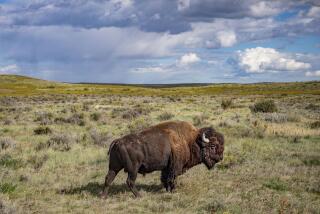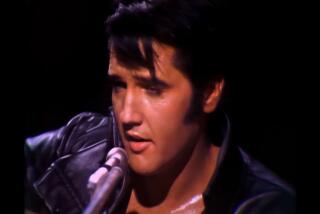The Duke’s ‘Alamo’ Vision Now Restored
- Share via
Clint Eastwood spent years waiting for just the right time to direct and act in “Unforgiven,” and the result has been critical acclaim, nine Oscar nominations--including best picture--and cheers that the Western has been reborn.
More than 30 years ago, John Wayne had a similar dream, and he spent years trying to make it a reality. To finally make “The Alamo,” the actor alienated several powers-that-were. The 1960 release, which he directed and in which he starred, grabbed seven Oscar nominations including best picture, but Wayne was not a happy man. He watched 26 minutes chopped off it within two weeks of its release in Los Angeles. The director’s cut hasn’t been seen since then.
Now, MGM/UA has released Wayne’s conception on laser disc, restoring the film to its original three hours and 22 minutes. That effort itself took more than a year, involving painstaking color-matching and sound balancing from an uncut 70mm print discovered in Toronto. The resulting three-disc letterboxed set ($50) also includes the original theatrical trailer and a documentary culled from interviews begun more than 10 years ago by Rice University’s Brian Huberman.
Eighteen restored scenes are visible, including the impressive final battle sequence in its entirety. In addition to Wayne as Davy Crockett, “The Alamo” features Richard Widmark as James Bowie and Laurence Harvey as William Travis. Restored scenes with Widmark are especially powerful on Side One. Linda Crystal’s many scenes with Wayne were either cut or mutilated during the film’s theatrical release. Now her performance, a moving one, is complete.
The documentary, while not great moviemaking, is a valuable piece of film history, offering interviews with key observers and participants as well as pieces of footage shot on location, including Harvey orating from “Richard II” with a Southern twang. Watching the mock Alamo being constructed from plans for the original church-turned-fort is mesmerizing. (The Alamo constructed for the film reappears in Sunday’s TV film “Rio Diablo” on CBS, featuring Kenny Rogers.)
Accompanying the special laser edition is a handsome brochure with 50 chapter stops, with the restored scenes noted; there are an additional 25 chapter stops for the documentary. The Technicolor production is well-served by the sharp transfer as well as the illustrated brochure.
Few played the stolid Western hero better than Wayne, as three other recent laser releases demonstrate. Among the best is Howard Hawks’ 1959 “Rio Bravo.” A two-disc release from Warner Home Video ($40), though not wide-screen, offers unusually crisp, well-defined digitally processed sound. The burnished, subtle color retains the dusty feel of the West. Unfortunately, the discs do not come in double sleeves and are jammed together. The fourth side is in the standard-play CAV format making for sharper freeze-frames. Though the film is 141 minutes long, there are only 22 chapter stops, including the theatrical trailer. Co-stars are Dean Martin, Ricky Nelson and Angie Dickinson.
Wayne teams up with William Holden in 1959’s “The Horse Soldiers,” directed by John Ford and featuring Constance Towers and Althea Gibson. The MGM/UA two-disc letterboxed release ($40) is, once again, handsomely packaged with informative liner notes. The one-hour, 56-minute film comes with 21 chapter stops, including the original trailer. The brilliant color bursts off the screen with almost too much intensity at times.
The 1973 “The Train Robbers,” with Ann-Margret and Rod Taylor, offers more comic turns in a wide-screen Warner release ($35). Not quite in the classic Ford or Hawks Western tradition, it doesn’t take itself too seriously. The one-hour, 32-minute single-disc is neatly letterboxed and comes with 16 chapter stops.
More to Read
Only good movies
Get the Indie Focus newsletter, Mark Olsen's weekly guide to the world of cinema.
You may occasionally receive promotional content from the Los Angeles Times.










